This was published 6 years ago
Christchurch, the city hit by the apocalypse, bravely tries to bounce back
By Steve Jacobs
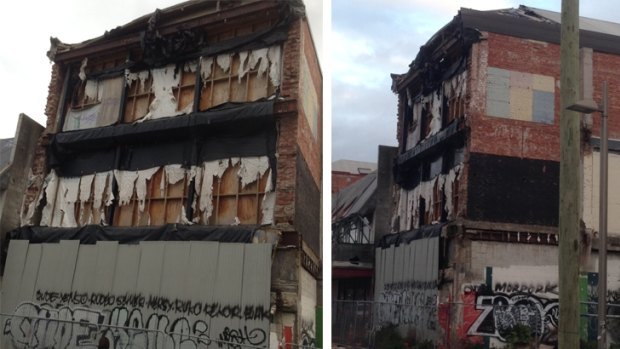
One of the derelict buildings in the Christchurch CBD.Credit: Steve Jacobs
Nothing quite prepares you for Christchurch.
Almost six years after God smote the city with an earthquake, it still looks like a scene from a movie about the apocalypse.
Get out of Christchurch as soon as possible, a tour operator suggested when he heard we were going there.
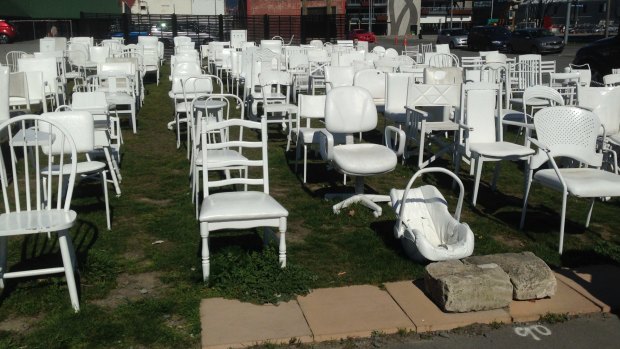
Heartrending: A baby's crib is among the 185 White Chairs commemorating those killed in the 2011 Christchurch earthquake.Credit: Steve Jacobs
I can see why. It has the feel of a perpetual Sunday afternoon in a country town that closes over weekends.
The quake in February 2011 was a big deal for the foreign news media for a few days or weeks but then dropped off the radar as the next disaster captured the world's attention ... and the next ... and the next.
But for the people of Canterbury the movie doesn't end; it's an ongoing nightmare. The quake may be a distant memory to those not directly involved - "oh yes, there was an earthquake; when did it happen?" - but the centre of Christchurch is still a ghost town.
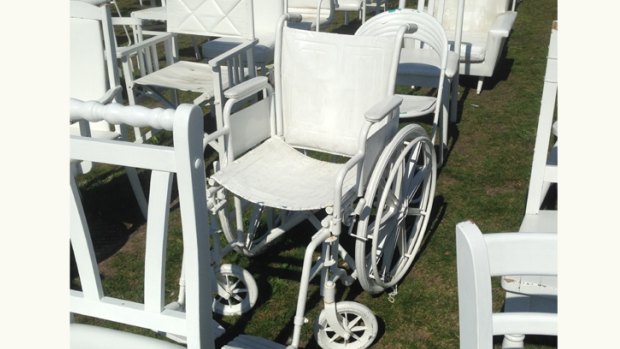
A wheelchair, one of the 185 White Chairs commemorating those killed in the 2011 Christchurch earthquake.Credit: Steve Jacobs
There are pockets of life in the CBD, but they are few and far between.
Hardly anyone is out and about. You can sit quite safely in the middle of one of the (still-operative) streets without the risk of being run over.
"Is it always this quiet?" I ask a pharmacist, standing lost in his white coat in an empty shop.
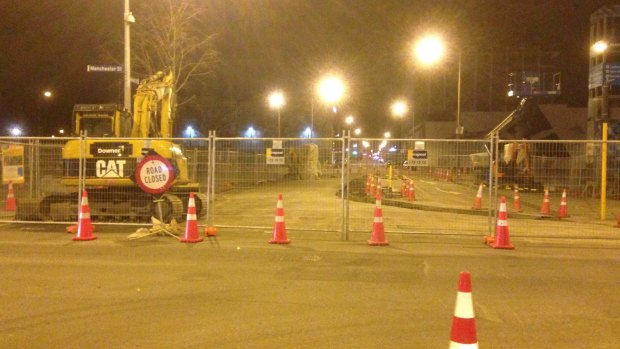
Night life: part of the Christchurch CBD in September 2016, more than five years after the earthquake.Credit: Steve Jacobs
"Sometimes it's busier," he replies. "They're going to have shops here - maybe next year. It'll still take two to three years to get it right."
I hope he can ride it out; it's an awfully long time to survive without customers.
But on the glass-half-full side of the ledger, the green shoots of growth are spurting everywhere.
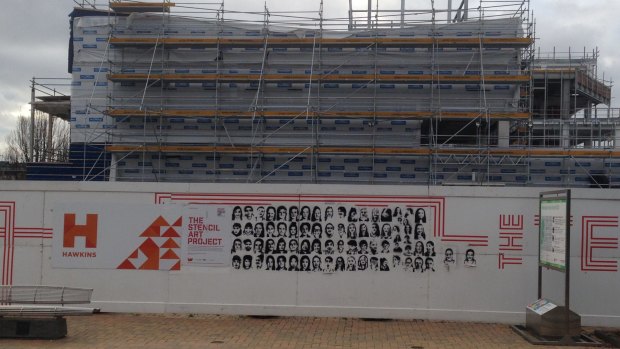
Building works in Christchurch's CBD in September 2016, more than five years after the devastating earthquake.Credit: Steve Jacobs
Cranes dominate the wrecked skyline, scaffolding swaddles newly born buildings, there are more hard-hatted workers than shoppers.
"Where can I find a bank?" I ask the receptionist in our hotel.
"There's one in the Re:START Mall," she says, drawing directions on a map of the city from a pile on the counter.
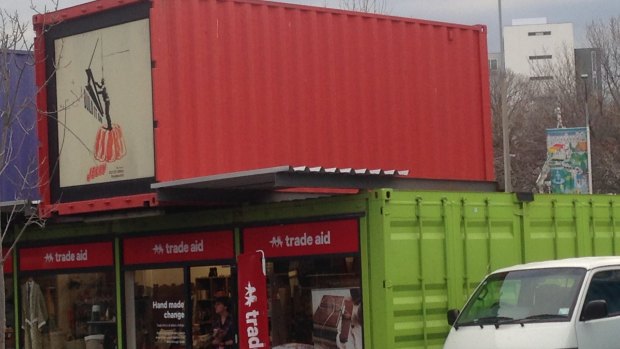
Green shoots: The Re:START Mall, made up of shipping containers.Credit: Steve Jacobs
The Re:START Mall is the ultimate in green shoots: a precinct created from scratch out of shipping crates.
It's surreal: a block made up of containers: shops, eateries, yes even banks, inside big colourful boxes
"They built Christchurch on a swamp," says a woman in a shop filled with All Black memorabilia.
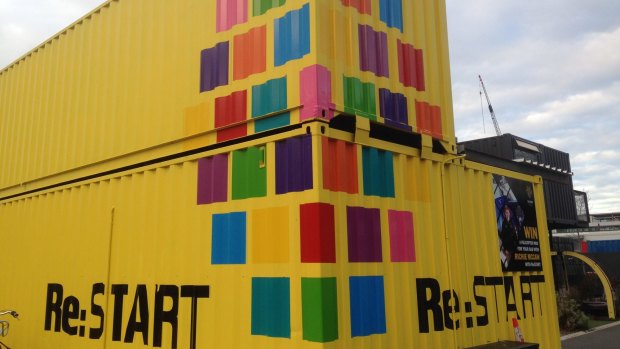
The Re:START Mall, made up of shipping containers.Credit: Steve Jacobs
"There was nothing to stop it from collapsing in the earthquake; 80 per cent of the CBD was destroyed. The city was closed off for two years.
"So many people lost their jobs and their homes. It was horrible. There wasn't even sewerage. people had to use long drops.
"And people are still sleeping in their cars."
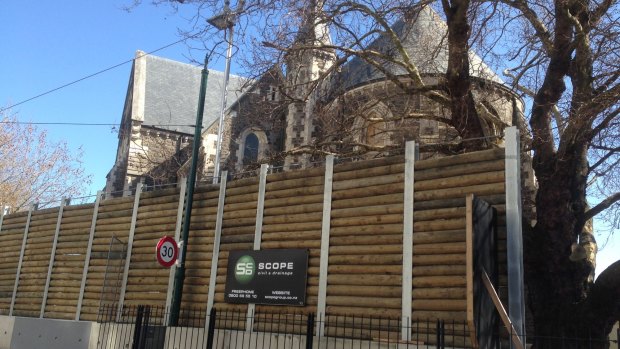
ChristChurch Cathedral was damaged in the earthquake and is unusable.Credit: Steve Jacobs
"Why's it taking so long to rebuild?" I ask.
"They've had to plan it right," she says. "So it never happens again.
"They've brought in experts from all over the world."
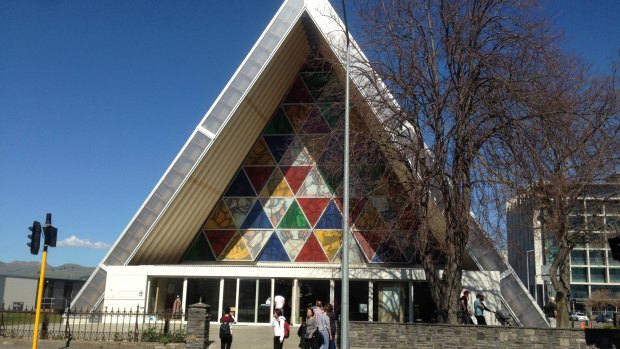
The Transitional Cathedral in Christchurch, also known as the Cardboard Cathedral, was built after the original cathedral was badly damaged in the 2011 earthquake.Credit: Steve Jacobs
A woman in the Quake City exhibition tells us that the new buildings will be made largely of glass that can withstand earthquakes.
She then asks if we've seen the Cardboard Cathedral and the White Chairs.
They're a few blocks away over on the corner of Cashel and Madras streets.
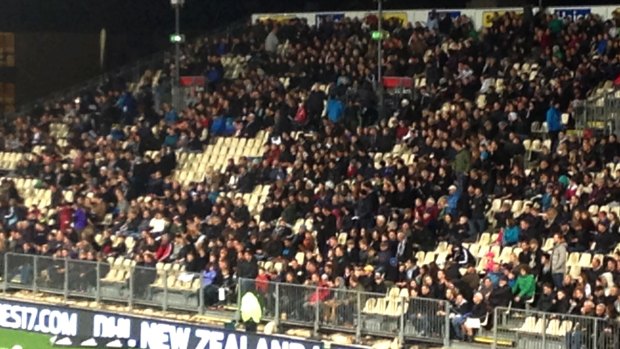
An uncovered stand at the temporary AMI Stadium in Christchurch for the Springboks v All Blacks Test.Credit: Steve Jacobs
Each of the 185 White Chairs represents someone who died, a poignant installation on an empty lot that is the city's unofficial earthquake memorial.
Among them is a baby's crib and a wheelchair: the quake smote young and old equally. And on a noticeboard, the lists and lists of names of the dead.
Across the road, the Cardboard Cathedral, officially known as The Transitional Cathedral, was built to stand in for the original cathedral that lost its spire and was severely damaged.
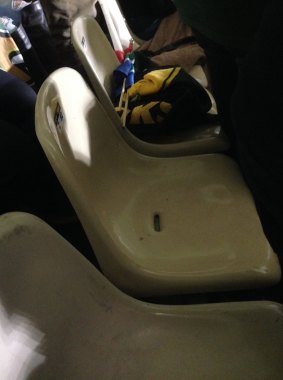
Plastic bucket seats at the temporary AMI Stadium.Credit: Steve Jacobs
It was designed by renowned Japanese architect Shigeru Ban, winner of the 2014 Pritzker Architecture Prize. It is made mostly from cardboard tubes, but also wood and steel. It seats about 700.
The bus driver taking us to Queenstown calls Christchurch a "broken city".
"You won't be too sorry to leave it behind," he says sadly, even though it's his home.
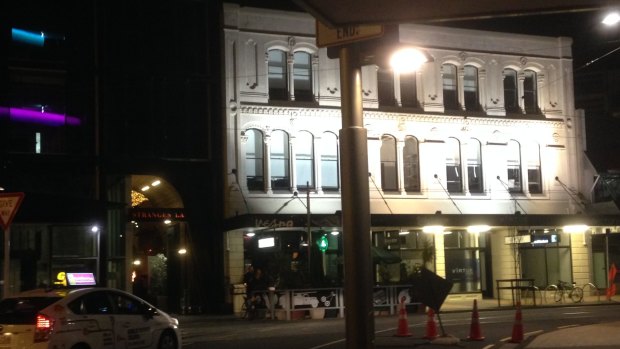
One of the few nightspots that gleam like white teeth among the black gapsCredit: Steve Jacobs
"Before the earthquake, the city had a population of 370,000. Now it's down to 350,000. So 20,000 people moved out.
"The big hotels were all demolished; guests couldn't get their belongings from their rooms; they were given temporary permits to get out of the country; 50,000 people lost their jobs.
"The police and the army closed the city centre for two years: no one was allowed to go in."
And then he regaled us with stories about the Canterbury countryside through which we were travelling; the beautiful lakes and the rugged mountains ahead.
On the other side of the South Island, vibrant Queenstown is everything Christchurch sadly isn't.
Whereas Christchurch is flat and broken, Queenstown, on the shores of Lake Wakatipu, is rocking, full of tourists, the launch pad to destinations such as the ski-fields and the breathtakingly beautiful Milford Sound.
But the rugby Test between the Springboks and the All Blacks was in Christchurch, not Queenstown, so back we had to go.
The old AMI Stadium - better known as Lancaster Park - was damaged so badly by the quake it's unusable and the Test was played in a makeshift arena now also called AMI Stadium. I guess that's one positive for the insurance company: hold onto those naming rights.
The new AMI holds only18,600 (its predecessor seated 43,000), and it was almost deserted when we got there at 5pm, which seemed a bit strange for an international between two rugby powerhouses.
But a respectable crowd did come eventually, in dribs and drabs, and settled down in their plastic seats. The stadium was full as the teams ran out.
After bravely staring down the haka, and surviving for almost an hour, the Boks suffered their own earthquake.
New Zealand pride was established in a devastating final 30 minutes.
The locals weaved their cheery, perhaps boozy, way back home.
Christchurch & Canterbury Tourism had put out an "Official Visitor Guide" that largely ignored the destruction, concentrating instead on whale watching, helicopter rides, a casino, museums, wildlife parks and an "Adrenalin Forest".
It gave passing mentions to Quake City and the Re:START Mall, but not the White Chairs, nor the ruins.
One should not be too negative, but this publication appeared to gild the lilly a little too much. It bore very little resemblance to the reality that we saw.
I have a memory of a fashionably dressed young woman making her way painfully on high heels through rubble to one of the few nightspots that gleam like white teeth among the black gaps in the CBD. Sadly, that's the reality.
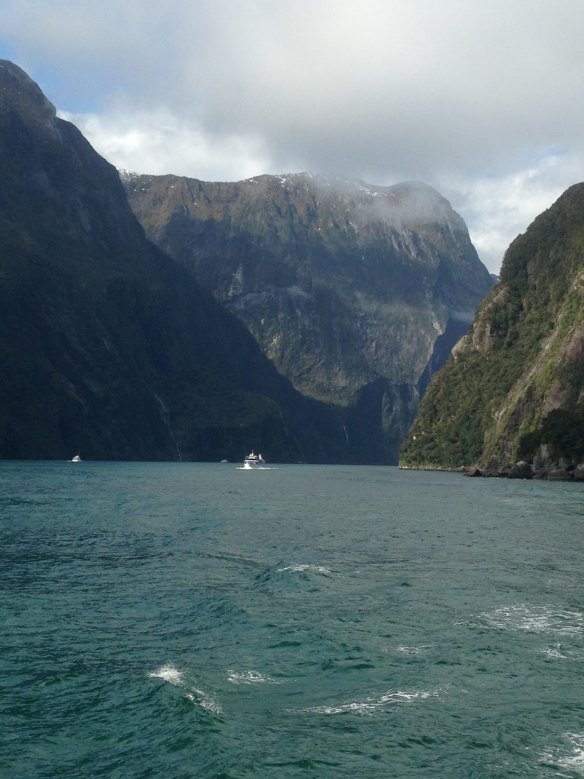
Milford Sound on the west coast of New Zealand's South Island.Credit: Steve Jacobs
Sign up for the Traveller Deals newsletter
Get exclusive travel deals delivered straight to your inbox. Sign up now.